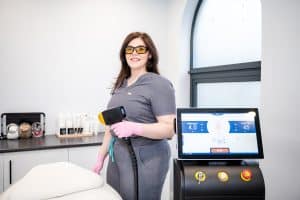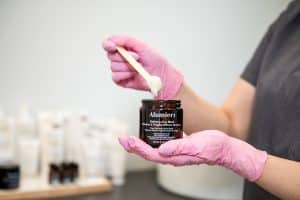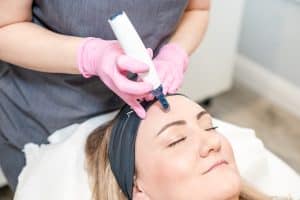Exploring Microneedling Success: Understanding Treatment Efficacy
Microneedling has garnered attention as a promising skincare treatment, praised for its ability to address a variety of skin concerns and rejuvenate the complexion. However, individuals often wonder about the success rate of microneedling and whether it lives up to its reputation. In this blog, we’ll delve into the factors that influence the success of microneedling treatments and what individuals can expect in terms of efficacy.
Understanding Microneedling
- The Microneedling Process: Microneedling, also known as collagen induction therapy, involves the use of a device equipped with fine needles that create controlled micro-injuries in the skin’s surface. These tiny punctures stimulate the skin’s natural healing response, triggering the production of collagen and elastin, which are essential for maintaining skin firmness, elasticity, and overall health.
- Collagen Remodelling: Following a microneedling treatment, the skin undergoes a process called collagen remodelling, where new collagen fibres are formed and existing collagen is rearranged and strengthened. This helps to improve skin texture, reduce the appearance of fine lines and wrinkles, and promote a more youthful and radiant complexion.
Factors Influencing Microneedling Success
- Skin Concerns: The success of microneedling treatments depends on the specific skin concern being addressed. Microneedling is effective for improving a wide range of concerns, including acne scars, fine lines and wrinkles, hyperpigmentation, enlarged pores, and uneven skin texture. Individuals with mild to moderate skin concerns typically experience the best results with microneedling.
- Skin Type and Condition: The success of microneedling treatments can vary depending on individual skin factors, such as skin type, tone, and overall health. While microneedling is generally suitable for most skin types, individuals with certain skin conditions, such as active acne, eczema, or rosacea, may not be ideal candidates for the treatment.
Treatment Protocol
- Number of Sessions: The success of microneedling treatments often depends on the number of sessions completed. While some individuals may see noticeable improvements after a single session, a series of treatments spaced several weeks apart is typically recommended for optimal results. The number of sessions required varies depending on the severity of the skin concern being addressed and individual skin response.
- Treatment Intervals: Microneedling sessions are usually spaced 4-6 weeks apart to allow for adequate healing and collagen production between treatments. This interval ensures that the skin has enough time to recover and maximises the effectiveness of subsequent sessions.
Expected Results
- Immediate Effects: Following a microneedling treatment, individuals may notice immediate improvements in skin texture and tone, as well as a temporary “glow” or radiance. These immediate effects are the result of increased blood flow to the skin and enhanced absorption of skincare products.
- Long-Term Benefits: The success of microneedling treatments extends beyond immediate results, with many individuals experiencing gradual improvements in skin texture, firmness, and overall appearance over time. With regular treatments and proper skincare maintenance, the results of microneedling can be long-lasting and transformative.
Client Testimonials and Clinical Studies
- Client Satisfaction: Many individuals who undergo microneedling treatments report high levels of satisfaction with the results. Client testimonials and reviews often highlight improvements in skin texture, reduction in acne scars and wrinkles, and overall enhancement of skin quality.
- Clinical Evidence: Clinical studies and research support the efficacy of microneedling for various skin concerns. Studies have shown that microneedling can lead to significant improvements in acne scars, fine lines and wrinkles, and overall skin texture, with minimal risk of side effects.
Consultation with a Skincare Professional
- Individualised Assessment: For personalised advice on microneedling treatments and expected results, it’s essential to consult with a qualified skincare professional or dermatologist. They can assess your skin’s condition, discuss your goals and concerns, and recommend a tailored treatment plan that addresses your specific needs.
- Realistic Expectations: While microneedling can yield impressive results for many individuals, it’s important to have realistic expectations about the outcomes of treatment. Results may vary depending on individual factors such as skin type, age, and the severity of the skin concern being addressed.
Conclusion
In conclusion, the success of microneedling treatments is influenced by various factors, including skin concerns, treatment protocol, and individual skin response. With its ability to stimulate collagen production, improve skin texture, and address a wide range of concerns, microneedling offers promising results for many individuals seeking to rejuvenate their complexion. By consulting with a qualified skincare professional and following a personalised treatment plan, individuals can maximise the success of their microneedling treatments and achieve healthier, more radiant skin.




